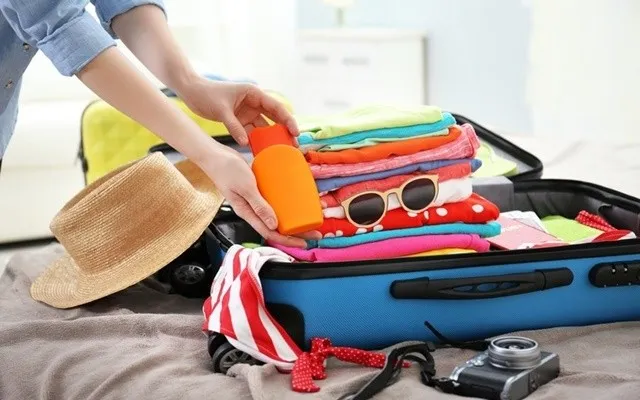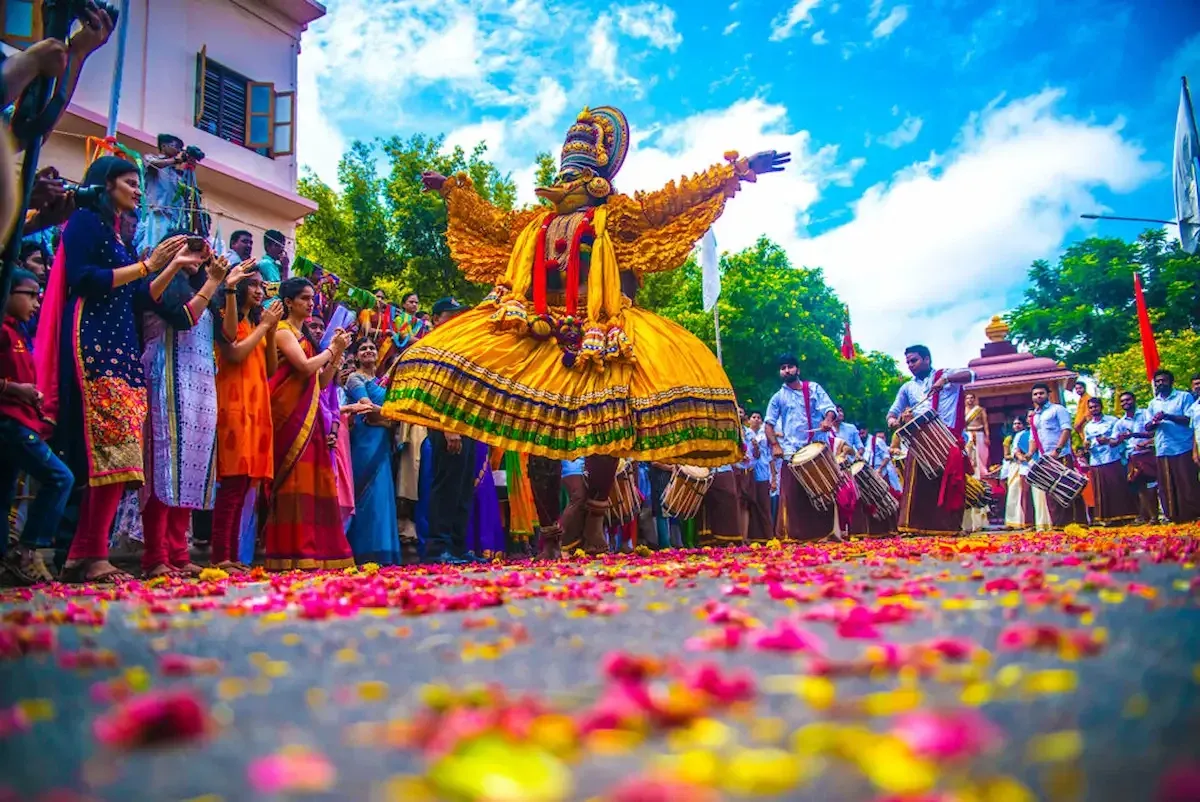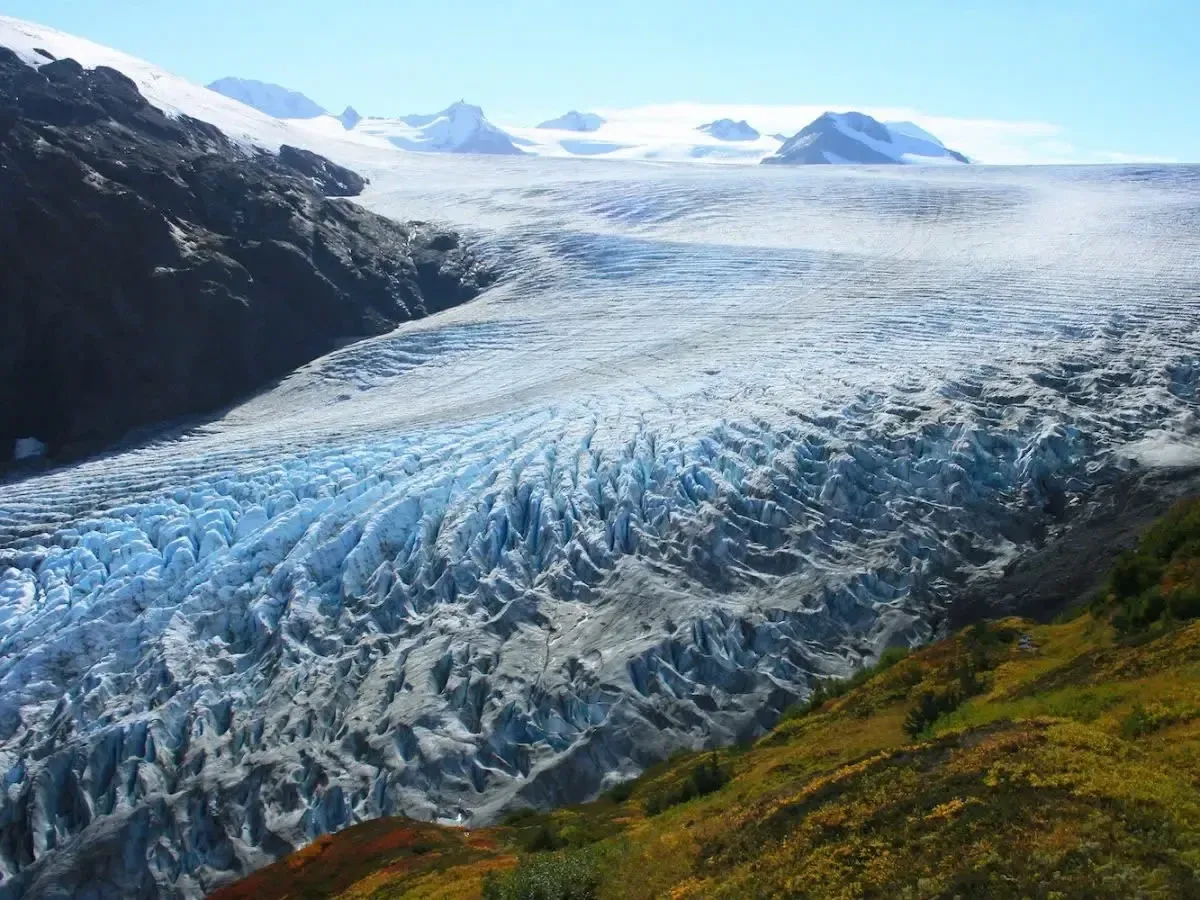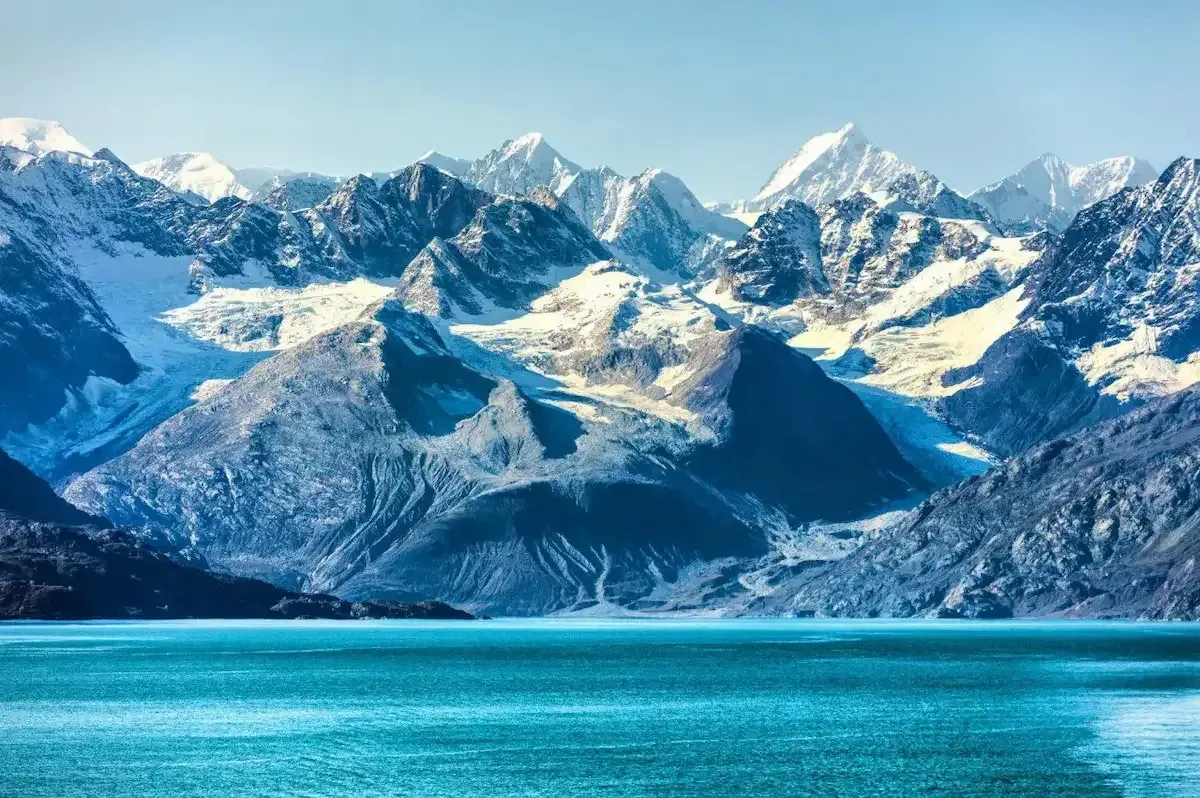Alaska, the land of snow-capped peaks, majestic glaciers, and untamed wilderness, has always been a dream destination for adventurous souls. However, this magnificent beauty hides a significant challenge: a harsh, frigid environment. To ensure your Alaskan journey is not just a trip but a safe and memorable adventure, equipping yourself with Alaska cold weather survival skills is paramount.
This article, compiled by travel experts from “Du lịch khắp thế gian” (Travel the World) website, will provide you with the essential knowledge and skills to face and overcome the challenges this icy land presents. We will explore everything from preparing your gear and survival skills to adapting to the climate and enjoying the unique beauty of Alaska safely.
Preparing Survival Skills and Knowledge
Before setting foot in Alaska, especially if you plan to explore remote wilderness areas, equipping yourself with basic survival skills and knowledge is indispensable. This is not just about Alaska cold weather survival skills; it’s also the key to feeling confident and safe in any situation.
Physical fitness and health: The cold environment demands a healthy body to withstand low temperatures and high-intensity physical activities. Start training physically before your trip by exercising regularly, especially focusing on endurance and cold resistance exercises. A balanced, nutritious diet is also crucial for boosting your immune system.
Learn basic survival skills: Familiarize yourself with cold weather survival skills such as building emergency shelters, starting fires in wet conditions, finding and treating drinking water, wilderness navigation, and basic first aid. Many online courses and resources can help you learn these skills.
Master knowledge of Alaskan terrain and weather: Understand the common terrain types in Alaska, such as mountains, glaciers, taiga forests, and coastlines. Learn about seasonal weather patterns, especially the harsh winter with extremely low temperatures, heavy snowfall, and strong winds. Regular weather forecasts will help you proactively respond to unexpected situations.
Detailed planning and informing loved ones: Before each trip, create a detailed plan of your itinerary, destinations, travel times, and planned activities. Share this plan with family or friends and inform them when you start and expect to finish your journey. This is crucial in case you encounter problems and need assistance.

Packing Winter Survival Gear for Alaska
Luggage is not just personal belongings but also essential winter survival gear for Alaska. Choosing and preparing your luggage correctly will help you cope with harsh weather and ensure safety throughout your journey.
Layered warm clothing: The principle of dressing in layers is key to effective warmth in cold environments. The innermost layer should be thermal underwear, the middle layer should be fleece or down jackets, and the outermost layer should be a windproof and waterproof jacket. Prioritize materials like wool, down, fleece, and specialized synthetic fabrics for winter outdoor activities.
Specialized winter footwear and socks: Keeping your feet warm is extremely important to prevent frostbite. Choose specialized snow boots that are waterproof, insulated, and have non-slip soles. Socks should be thick wool socks or specialized winter socks with good insulation and moisture-wicking properties. Bring at least two pairs of socks to change when needed.
Body protection accessories: Don’t forget important accessories like gloves, wool hats, scarves, and sunglasses. Gloves should be thick, waterproof, and well-insulated, ideally two-layered gloves. Wool hats need to cover your head and ears for maximum warmth. Scarves protect your neck and face from cold winds. Sunglasses not only protect your eyes from sunlight but also against glare reflected from snow.
Navigation and communication devices: In the Alaskan wilderness, GPS devices and satellite phones are vital life-saving items. GPS helps you locate and navigate, while satellite phones allow you to communicate with the outside world in emergencies. Make sure you know how to use these devices proficiently before you go.
Medical and first aid supplies: Prepare a comprehensive personal medical kit, including bandages, antiseptic, pain relievers, cold medicine, anti-diarrheal medication, and other personal medications. Learn how to administer first aid for common cold-weather conditions like hypothermia, frostbite, and cold burns.
Emergency food and water: Carry enough high-energy, portable food like chocolate, protein bars, nuts, and instant meals. Water is also crucial, especially in a dry, cold environment. A thermos will help keep water warm throughout your journey.

Understanding Alaska’s Harsh Environment
To survive effectively in the Alaskan cold, understanding Alaska’s harsh environment is extremely important. This includes knowledge of the climate, terrain, and other natural factors that can affect your safety.
Diverse and harsh climate: Alaska has diverse climate zones, ranging from mild coastal areas to extremely cold inland and Arctic regions. Winter is long and harsh across most of the territory, with temperatures dropping very low, especially in inland areas like Fairbanks and Denali. Summer is short and cool, but there can still be unexpected cold spells.
Rugged and pristine terrain: Alaska is famous for its diverse and pristine terrain, including high mountains, glaciers, dense forests, and tundra. The rugged terrain makes travel difficult and can harbor many dangers like deep ravines, glacial crevasses, and landslides.
Wildlife hazards: Alaska is home to many wildlife species such as bears, wolves, moose, and foxes. While not always dangerous, encounters with wildlife can create hazardous situations, especially if you don’t know how to behave properly.
Unpredictable weather changes: Weather in Alaska can change very quickly and unpredictably. A sunny day can rapidly turn into snow or blizzards. Strong winds are also frequent, increasing the chill factor and making travel difficult.
Sunlight and darkness: In Arctic Alaska, the “midnight sun” phenomenon in summer and the “polar night” in winter can affect your circadian rhythm and navigation ability. In winter, daylight hours are very short, with some places plunged into complete darkness for weeks.

Skills to Cope with Weather and Terrain
Skills to cope with weather and terrain are crucial for your success and safety in the Alaskan cold. Beyond knowledge, you also need practical skills to deal with challenging situations.
Finding and building shelter: When unexpected bad weather hits or you need rest, finding or building shelter is vital. In nature, you can look for natural caves, rock overhangs, or dense bushes to escape wind and snow. If unavailable, you need to know how to build emergency shelters using natural materials or a specialized tent you carry.
Starting fires in harsh conditions: Fire not only provides heat for warmth but also helps with cooking, boiling water, and deterring wildlife. Learn how to start fires in wet conditions, using easily flammable materials like birch bark, pine resin, and small dry twigs. Carry waterproof matches or a backup lighter.
Finding and treating drinking water: Water is essential for survival. In cold environments, you can get water from snow or ice. However, snow and ice need to be boiled or filtered to remove bacteria and impurities. If there’s a flowing water source, prioritize using spring or river water, but still treat it before drinking.
Navigation and safe travel: Navigation skills using maps, compasses, and GPS are essential, especially when traveling in complex terrain or when visibility is limited due to bad weather. Always pay attention to trail markers, avoid traveling alone, and inform others of your route. When traveling on snow or ice, use ski poles to maintain balance and probe the surface for firmness.
Emergency response: Be prepared for emergencies like getting lost, injury, or unexpected bad weather. Always carry a rescue whistle, signal mirror, and flares to signal your location when needing help. Know how to administer first aid for common injuries and stay calm to make sound decisions.

Safety and Health in Cold Environments
Safety and health in cold environments are always top priorities. Harsh environments can cause serious health problems if you don’t take preventive measures and respond promptly.
Preventing hypothermia: Hypothermia occurs when your body loses heat faster than it can produce it, causing your body temperature to drop to a dangerous level. To prevent it, always wear warm clothing, stay dry, eat nutritious food, and avoid direct exposure to cold winds. Recognize early signs of hypothermia like shivering, confusion, and disorientation to take timely action.
Preventing frostbite: Frostbite is tissue damage caused by exposure to extremely low temperatures, often occurring on exposed skin areas like fingers, toes, ears, and nose. To prevent it, always keep these areas warm with gloves, socks, hats, and scarves. Avoid direct contact with cold metal and don’t wear overly tight socks or gloves. If you suspect frostbite, slowly warm the affected area and seek medical help.
Protecting eyes from glare: Sunlight reflecting off snow and ice can cause “snow blindness,” damaging the cornea and causing pain and temporary blurred vision. To prevent it, always wear sunglasses or UV-protective goggles when outdoors in snowy conditions.
Staying hydrated and maintaining energy: Dehydration can occur quickly in cold environments, especially during physical activity. Drink enough warm fluids regularly to keep your body hydrated. Eat full, energy-rich meals to fuel your body in the cold.
Paying attention to altitude sickness (if in high mountains): If you’re climbing mountains in Alaska, be aware of altitude sickness symptoms like headaches, nausea, dizziness, and shortness of breath. Ascend gradually to allow your body to acclimatize, drink plenty of water, and avoid stimulants like alcohol and caffeine. If symptoms are severe, descend to a lower altitude immediately.

Choosing the Right Exploration Style
Choosing the right exploration style is also an important part of Alaska cold weather survival skills. Depending on your experience, fitness, and goals, there are many ways to explore this land, from adventurous independent travel to joining professional tours.
Independent travel: This style suits those with survival experience, who enjoy freedom of exploration and can manage independently in any situation. Independent travel allows you to design your own itinerary, choose destinations, and experience Alaska your way. However, it also requires thorough preparation, good survival skills, and a higher risk management capability.
Guided tours: Joining a professional tour is a safer and more convenient option, especially for first-time visitors to Alaska or those with limited cold weather survival experience. Reputable tour companies like Premier Tour offer well-designed tours with experienced guides, guaranteed equipment, and safe itineraries. Tours help you explore highlights without worrying about logistics and safety issues.
Combining both styles: Some people choose to combine both independent and guided travel. They might explore some accessible areas independently and then join tours to explore more remote and rugged regions, or to participate in special activities like aurora viewing, dog sledding, or glacier trekking.

Conclusion
Surviving in the Alaskan cold is not just a challenge but also an opportunity to discover your inner strength and admire the magnificent beauty of nature. By equipping yourself with adequate knowledge, skills, and thorough preparation, you can turn your Alaskan journey into a memorable and safe experience.
Remember, respecting nature and always prioritizing safety are the most important principles in any adventure. Wishing you a fulfilling and meaningful Alaskan exploration!